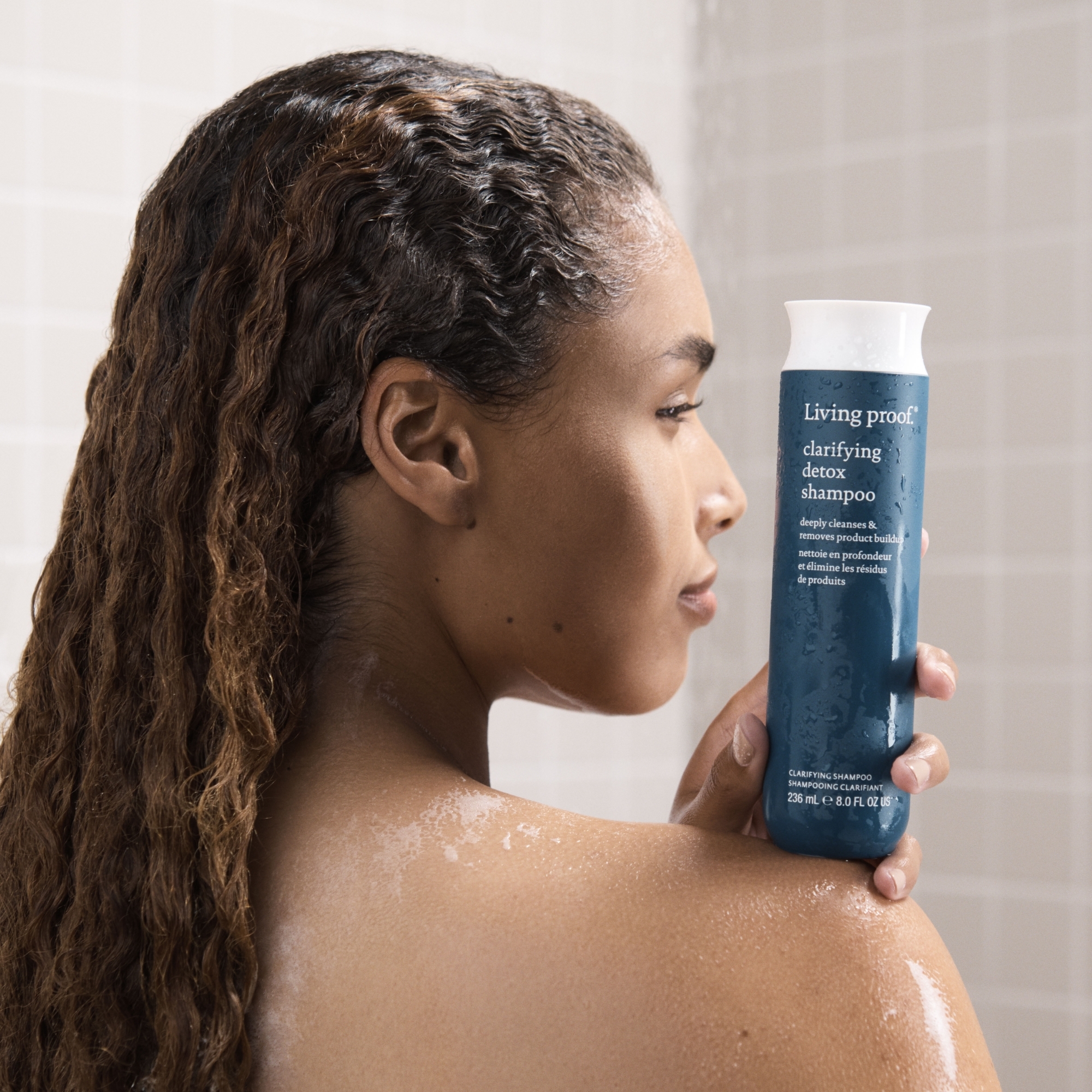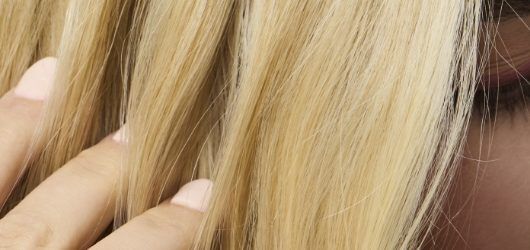
Hair Density 101: What It Means, How It’s Measured & How to Increase It
Did you know a typical human scalp has between 80,000 to 120,000 hairs? This figure, which varies from person to person and across different ethnicities, represents what we know as hair density.
Hair density isn’t a metric of quality — it’s neither good nor bad to have high- or low-density hair. It’s simply one of many characteristics of your hair, like its color or texture. The only time it might indicate a problem is in cases of extreme nutritional deficiencies.
Understanding your hair density is a key factor in unlocking the full potential of your haircare routine, as it informs personalized approaches to styling and maintenance. In this guide, we’ll dive into what hair density really means, how you can correctly measure it, and proven techniques to make your hair appear denser. Welcome to Hair Density 101 — let’s get started.
What is Hair Density?
Hair density refers to the number of individual hair strands per square inch on the scalp. It’s responsible for giving your hair the overall appearance of being thick or thin and is a key factor in understanding the unique characteristics of your hair.
Hair Density vs. Hair Thickness: What’s the Difference?
Two terms that often create confusion are hair density and hair thickness. Both are important but serve different roles in the overall health and manageability of your hair.
As opposed to hair density, hair thickness refers to the width of individual hair strands. It’s also known as hair texture and can be classified into three categories: fine, medium, and coarse.
A common misconception is that thick hair equals high-density hair, which isn’t always true. Hair thickness relates to the width of individual strands, not the number of strands on the scalp. You could have high hair density, meaning many hair strands per square inch of your scalp, but each of those strands could have a thin or fine texture. This would result in hair that appears full due to the number of strands but feels lightweight or delicate due to the thinness of individual strands. On the other hand, if you have low hair density, meaning fewer hair strands, each strand could still be thick or coarse. Even though there are fewer strands overall, the hair could feel heavy or robust if the individual strands are thick.
Types of Hair Density
Identifying your hair density — low, medium, or high — is a vital step toward personalizing your haircare routine. Here’s a look at each density type:
- Low-density hair
- Low-density hair means fewer hair strands per square inch. In some instances, the scalp may be visible even without parting the hair. This delicate hair type tends to be thin and easily overwhelmed by heavy products. Choosing lightweight haircare products is key here.
- Medium-density hair
- With a balanced number of hair strands per square inch, medium-density hair is the middle ground. You won’t see the scalp unless the hair is parted. This hair type offers styling versatility and is amenable to a broad range of products and styles.
- High-density hair
- Of the three types, high-density hair includes the most strands per square inch. The scalp is typically hard to see, even when the hair is parted. This hair type tends to be thick and full, which might make styling and maintenance a bit more challenging. Heavier creams and oils can help manage and nourish this hair type.
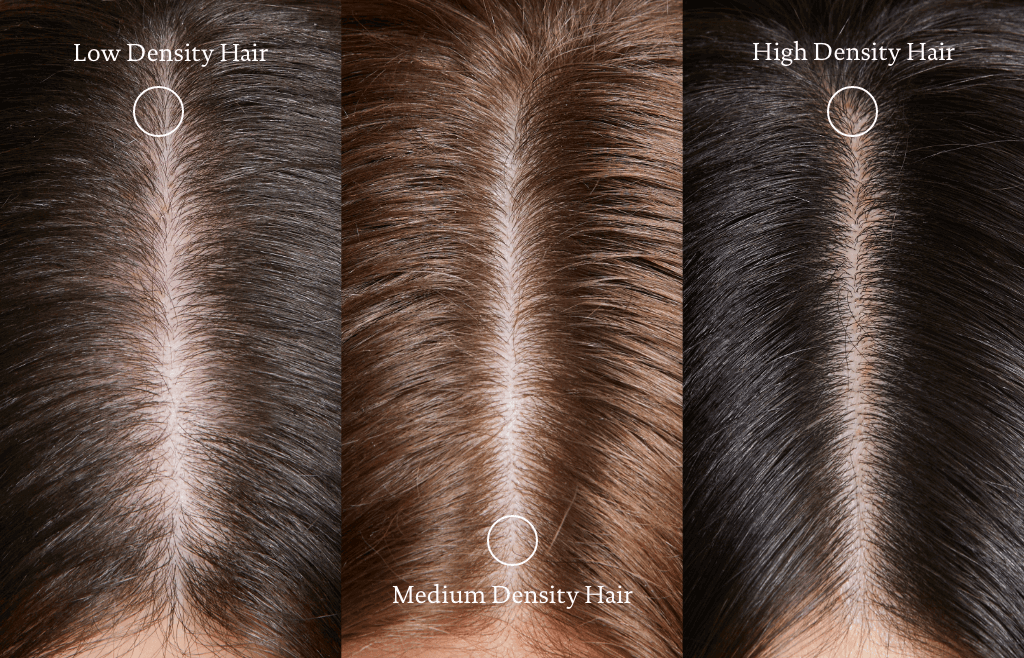
Why Does Understanding Your Hair Density Matter?
Understanding your hair density can significantly enhance your haircare routine and styling choices. Here’s why knowing your hair density is so important:
- Product selection: Different hair densities often require different types of products. For example, low-density hair might benefit from lightweight volumizing products, while high-density hair might need heavier creams or oils to keep the volume in check. Our Full Stylers product line is tailor-made for all low-density hair types. You might think volumizing products are only for individuals with thin hair strands. But even if you have fewer strands — no matter their thickness — our Full Stylers can deliver the desired volume and lift.
- Flattering hairdos: Your hair density can guide your hairstyle choices. Cuts and styles that add volume might be more suitable for low-density hair, while high-density hair can handle heavier, more structured styles. More on that in the sections below!
- Hair health monitoring: Significant changes in hair density could hint at potential health issues. Regularly measuring your hair density might help you catch early signs of hair thinning or loss.
- Personalized haircare routine: Your hair density can influence various aspects of your haircare routine, such as how often to wash your hair or how much product to use. For example, high-density hair might need washing and product application more frequently due to its volume and oil retention capacity.
- Hair extensions and wigs: If you’re considering hair extensions or wigs, your hair density can help you pick the most natural-looking options. A match in density can significantly improve the overall appearance and blend of these hair enhancements.
- Hair coloring and chemical treatments: Hair density can affect your experience with color treatments or chemical processes. High-density hair, for example, may take longer to apply color or require more product for a chemical treatment, impacting the procedure’s cost and duration.
How to Measure Hair Density
Assessing your hair density is simpler than it may seem. Here are a few straightforward steps you can take to measure the density of your hair:
- Wash and dry your hair: Begin with clean, dry hair. Oils and products can change the thickness and clumping of your hair strands, which may impact your assessment.
- Section your hair: Part your hair as you usually would. This provides a realistic view of your hair’s natural density.
- Examine your scalp: Inspect your scalp closely in the mirror under bright light. If your scalp is easily visible without actively parting your hair, you likely have low-density hair. If it’s somewhat visible, you likely have medium-density hair. If your scalp is hardly or not visible at all, you likely have high-density hair.
- Try the ponytail test: If your hair is long enough, tie it into a ponytail and measure its circumference. A measurement of less than 2 inches indicates low-density hair. Between 2-3 inches implies medium-density hair. Four or more inches indicates you have high-density hair.
- Consult a professional: If you find it difficult to determine your hair density, a professional hair stylist or trichologist can provide an accurate assessment.
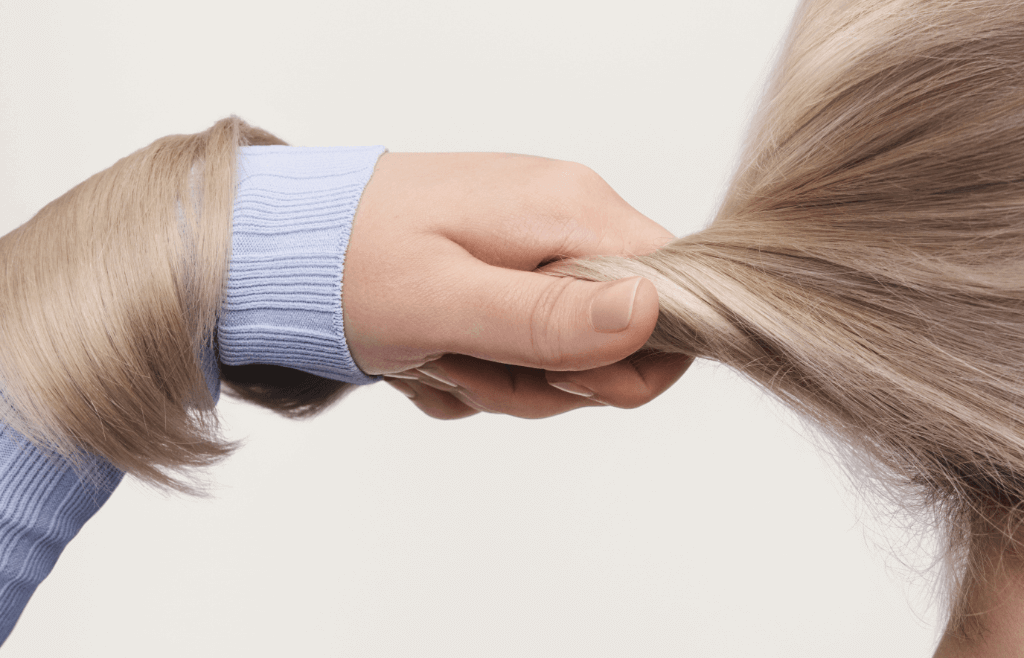
Haircare Tips Based on Hair Density Type
Hair density can help guide your ideal haircare routine, providing insights into product selection and styling techniques best suited to your hair type. Here are some tailored recommendations based on hair density:
Low-density hair
- Product choices: Choose lightweight products that won’t weigh your hair down. Volumizing shampoos, conditioners, and styling products can help your hair appear fuller. Avoid heavy oils and creams, which may make your hair look flat.
- Styling tips: Opt for styles that create the illusion of volume. Layered cuts, curls, and waves can provide a fuller appearance. Consider techniques like blow-drying your hair upside down to boost volume.
Medium-density hair
- Product choices: Medium-density hair typically responds well to a wide range of products. Seek out those that maintain the natural balance of your hair, which might involve a bit of experimentation to find the perfect match.
- Styling tips: With medium-density hair, you can explore various styles. Straight, wavy, or curly — you can play around with numerous looks without worrying about your hair appearing too flat or excessively full.
High-density hair
- Product choices: With the thickness and volume of high-density hair, moisturizing and detangling products are often beneficial. Heavier creams and oils may be required to keep your hair well-moisturized and easy to style.
- Styling tips: Hairstyles that reduce volume, such as layered and thinned cuts, can help manage high-density hair. Alternatively, you can showcase your hair’s natural volume with styles that highlight its fullness.
Hairstyles for Your Hair Density
The density of your hair can greatly influence which hairstyles will enhance your natural attributes. Let’s explore hairstyles ideally suited for each hair-density type.
Styles for lower-density hair
Choosing the right hairstyle can significantly boost the appearance of volume in low-density hair. Consider the following styles:
- Bob cuts: These cuts create a fuller look, as the dense ends give an illusion of volume.
- Curls and waves: Employ curlers, a curling iron, or a wave iron to add volume and make hair appear denser.
- Volume-boosting updos: Opt for high buns, teased ponytails, and other updos that amplify the perception of hair density.
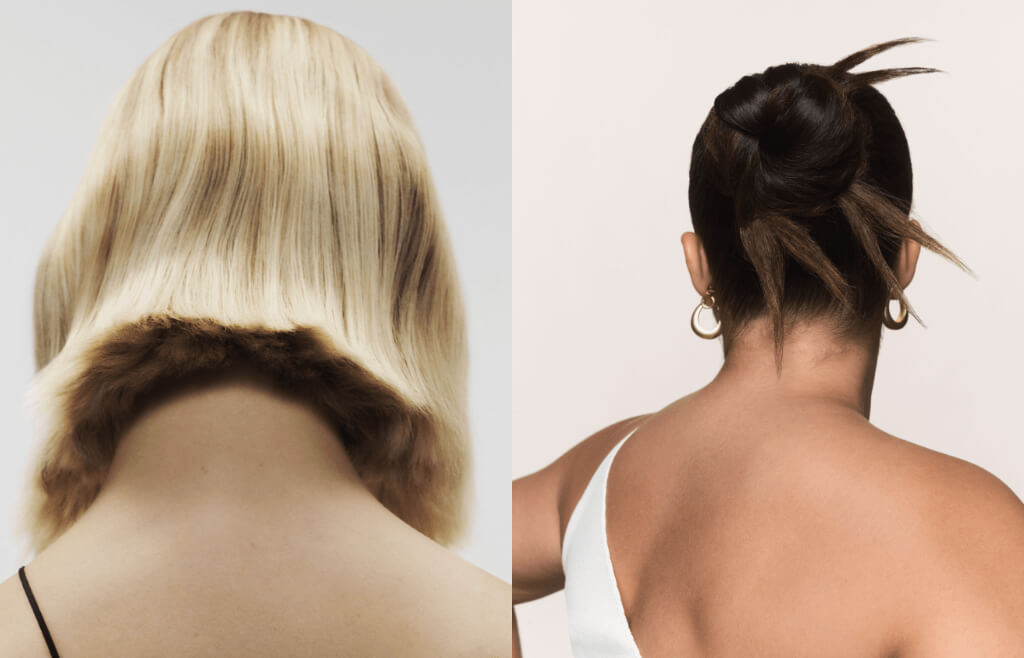
Styles for medium-density hair
Medium-density hair provides a wide range of styling options, as most hairstyles work well with this density. Here are some suggestions:
- Versatile styles: With the flexibility of medium-density hair, you can choose between short, medium, or long lengths depending on your personal preference or style.
- Textured styles: Braids, twists, and waves add interest and dimension to your hair. Plus, medium-density hair holds these styles well.
- Straight and sleek: If you lean toward a straight style, medium-density hair can achieve a sleek and shiny look without appearing too thin.
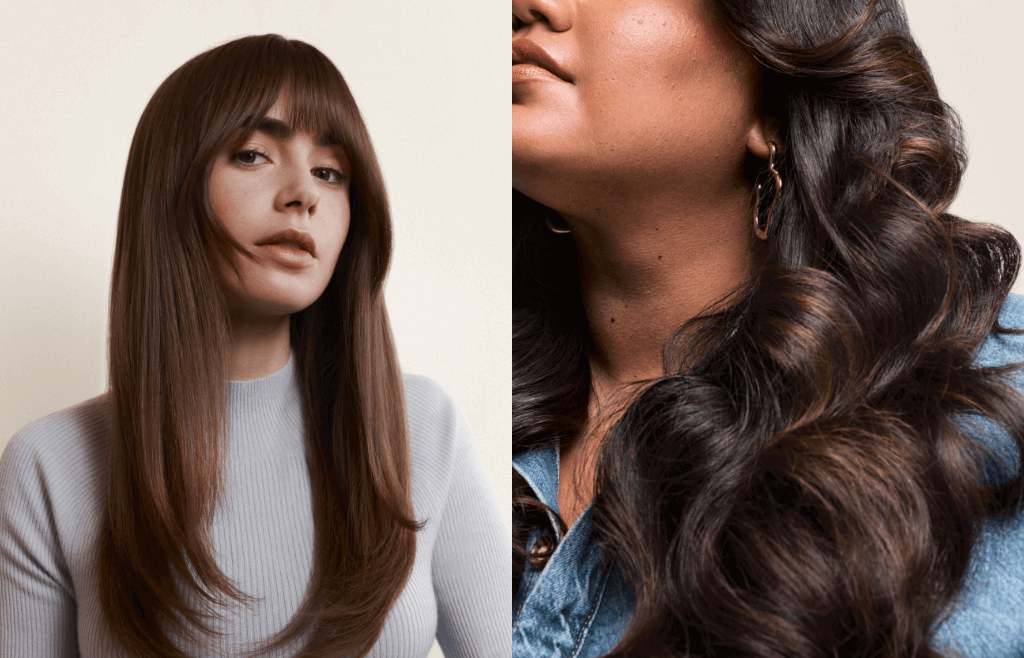
Styles for higher-density hair
High-density hair, with its natural volume, can benefit from styles that help enhance its fullness. Consider these options:
- Long-layered cuts: These cuts assist in dealing with the natural fullness of high-density hair, reducing the sense of bulkiness while maintaining the full appearance.
- Curly styles: Show off your high-density hair by embracing your natural curls. Just be sure to keep your hair well-moisturized to prevent frizz.
- Thinning techniques: If your hair is excessively dense, your stylist can use thinning shears to subtly reduce some of the fullness.
- Braids and twists: Braids, twists, and similar styles showcase the volume of high-density hair. These styles can also protect your hair and help prevent tangles.
- Longer hairstyles: Choosing longer hairstyles can subtly soften the high-density hair’s volume due to its own weight.
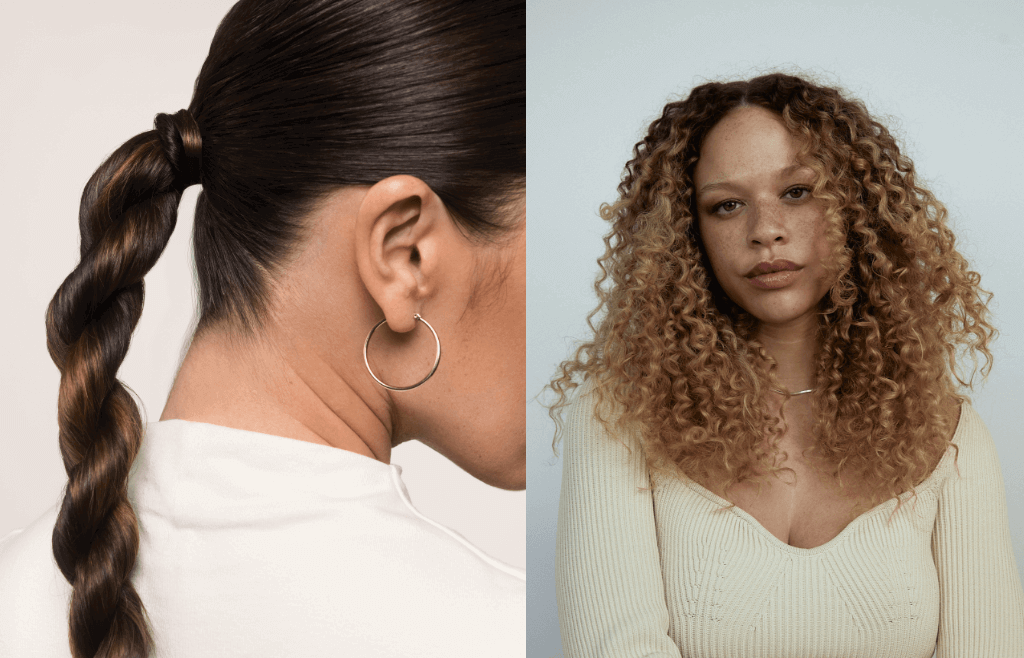
8 Ways to Give the Appearance of Increased Hair Density
You may be wondering how to increase hair density, and although you may not be able to change the natural number of strands on your head, there are steps you can take to make your hair look fuller. Here are several effective strategies to make your hair appear denser, from the right haircare products to hairstyles and treatments.
- Use volumizing products: Opt for shampoos, conditioners, and styling products designed to add volume. These products work by making your hair strands appear fuller.
Experience the difference with these newest additions to our Full Stylers collection:
- Full Texturizing Foam: A dry foam that delivers 3x more texture*. Use to style, restyle, or revive hair for an effortless look that lasts all day.
- Full Thickening Blow-Dry Cream: A lightweight styling cream that adds thickness, delivering 30% thicker-looking hair*, with a hint of conditioning for natural, long-lasting body and fullness.
- Full Volume & Root-Lifting Spray: An invisible volume spray with heat protection that delivers 2x more volume*—it’s designed for all-day fullness.
*vs. untreated
- Try a new haircut: Some haircuts, like layered cuts or blunt bobs, can give the illusion of denser hair. Consult a professional stylist to select a style that suits your hair type and face shape.
- Opt for lighter hair colors: Lighter shades can minimize scalp visibility and give your hair the illusion of density. Adding highlights can also introduce depth to your hairstyle, making it appear fuller.
- Use hair extensions or toppers: For a substantial volume boost, consider hair extensions or toppers. They provide instant density and can be matched to your hair color for a natural look.
- Style your hair with curls or waves: Adding curls or waves to your hair introduces extra volume, giving the impression of increased density. Use curling irons or rollers, or try no-heat methods such as braiding your damp hair and letting it dry naturally.
- Try scalp micropigmentation or hair fibers: Cosmetic procedures like scalp micropigmentation [a tattoo technique that replicates the look of hair follicles] or hair fibers [tiny particles that adhere to your hair to create fullness] can create the illusion of dense hair.
- Avoid heavy products: Heavy oils and creams can flatten your hair, making it appear less dense. Instead, choose lightweight products that won’t weigh your hair down.
- Try backcombing or teasing your hair: Gently backcombing or teasing your hair can significantly enhance volume, creating a denser look. Just remember to use this technique sparingly to prevent potential hair damage.
Understanding your hair density is a game-changer when it comes to finding the right products, creating flattering hairstyles, and ensuring optimal hair health.
Living Proof is dedicated to providing solutions that cater to the needs of all hair types and densities. With our scientifically-proven formulations, you can give the targeted care it needs to reveal its brilliance.
Start your personalized haircare journey by taking our Hair Quiz today to find the Living Proof products tailored for your hair’s unique density and other characteristics.
FAQs
What is hair density?
Hair density refers to the number of individual hair strands on your head per square inch. It’s categorized into three types: low, medium, and high density.
What’s the difference between hair density and hair thickness?
While hair density is the number of hair strands on your scalp, hair thickness refers to the width or diameter of each hair strand. It’s possible to have thin (fine) hair strands but high hair density or thick (coarse) hair strands but low hair density.
Why is understanding my hair density important?
Understanding your hair density helps you make informed decisions about haircare routines, product choices, and suitable hairstyles. It can help you select the most flattering hairstyles, choose products that won’t weigh your hair down or undernourish it, and understand potential changes in hair health.
How can I measure my hair density at home?
You can gauge your hair density by parting your hair and closely examining your scalp. If your scalp is easily visible, you likely have low-density hair. If it’s somewhat visible, you likely have medium-density hair. If your scalp is hardly visible, you may have high-density hair. Another method involves measuring the circumference of your ponytail. If smaller than 2 inches, you probably have low-density hair. If it’s between 2-3 inches, you likely have medium-density hair. If it’s 4 or more inches around, you have high-density hair.
Can I increase my hair density?
While it’s difficult to increase the number of hair follicles on your scalp without the help of medical procedures or pharmaceuticals, there are numerous ways to make your hair appear denser. These include using volumizing products, trying new haircuts that create an illusion of volume, opting for lighter hair colors, and styling your hair in ways that add fullness.


